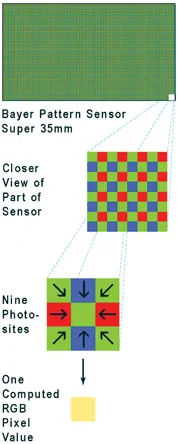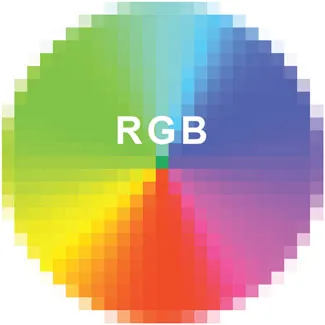
- 459 pages
- English
- ePUB (mobile friendly)
- Available on iOS & Android
About this book
First published in 2014. With the shift from film to digital, a new view of the future of cinematography has emerged. Today's successful cinematographer must be equal parts artist, technician, and business-person. The cinematographer needs to master the arts of lighting, composition, framing and other aesthetic considerations, as well as the technology of digital cameras, recorders, and workflows, and must know how to choose the right tools (within their budget) to get the job done. David Stump's Digital Cinematography focusses primarily on the tools and technology of the trade, looking at how digital cameras work, the ramifications of choosing one camera versus another, and how those choices help creative cinematographers to tell a story. This book empowers you to both correctly choose the right camera and workflow for your project from today's incredibly varied options, as well as understand the ins and outs of implementing those options. Stump sheds a light on the confusing advantages and disadvantages of shooting theatrical features using digital technology and what it can or can't do. Topics covered include:
* Detailed coverage of Arriflex, Blackmagic, Canon, Ikonoskop, Panasonic, Panavision, Phantom, Red, Silicon Imaging, Sony, and Weisscam digital motion picture cameras
* Coverage of a wide variety of lenses, including Angenieux, Canon, Cooke, Fujinon, Hawk, Leica, Panavision, Red, Schneider, Sony, UniqOptics, Vantage, and Zeiss
* Coverage of recorders, displays, and look management tools
* Exposure theory tips - learn how to correctly expose digital cameras
* Focusing tips - learn how to focus digital cameras correctly
* Checklists to help design digital workflows
* Practical tips on preparation - prepare for shooting a digital motion picture like a professional
* Camera set-up and operation, color management, digital intermediates, 3D stereo cinematography, future trends, and much more
If you aspire to be a successful cinematographer in this new digital age, or if you already are a working cinematographer in need of a resource to help you stay on top of your game, this is a must-read book.
Frequently asked questions
- Essential is ideal for learners and professionals who enjoy exploring a wide range of subjects. Access the Essential Library with 800,000+ trusted titles and best-sellers across business, personal growth, and the humanities. Includes unlimited reading time and Standard Read Aloud voice.
- Complete: Perfect for advanced learners and researchers needing full, unrestricted access. Unlock 1.4M+ books across hundreds of subjects, including academic and specialized titles. The Complete Plan also includes advanced features like Premium Read Aloud and Research Assistant.
Please note we cannot support devices running on iOS 13 and Android 7 or earlier. Learn more about using the app.
Information
Chapter 1
What Is Digital



Image courtesy of Tim Kang


Image courtesy of Jay Holben


Image courtesy of Tim Kang

Image courtesy of Tim Kang

Image courtesy of John Savard
What Are Pixels?


Photosites Are Not Pixels!

Analog to Digital
Table of contents
- Cover
- Half Title
- Title
- Copyright
- Contents
- Acknowledgments and Dedications
- Foreword
- A Note on the Color
- Chapter 1 What Is Digital
- Chapter 2 Camera Sensors
- Chapter 3 Color
- Chapter 4 The Color-Space Conundrum
- Chapter 5 MTF, Resolution, Contrast, and Nyquist Theory
- Chapter 6 Frame Rates and Aspect Ratios
- Chapter 7 Lenses
- Chapter 8 Camera Issues
- Chapter 9 High-Resolution Digital Motion Picture Cameras
- Chapter 10 Camera Setup and Operation
- Chapter 11 Prep, Workflow Design, and Testing
- Chapter 12 The Shoot
- Chapter 13 Color Management, Compression, and Workflow
- Chapter 14 Recorders
- Chapter 15 Displays
- Chapter 16 Postproduction and Digital Intermediate
- Chapter 17 Delivering and Archiving Digital Movies
- Index